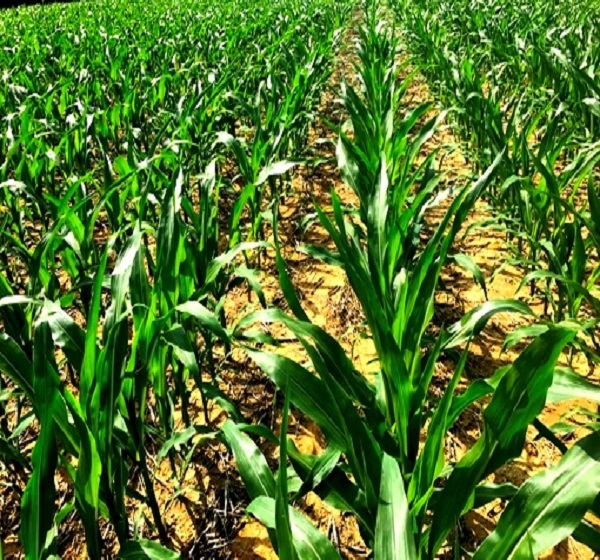Agriculture since the inception of the country Nigeria has been a mainstay of the economy. Nigeria is richly blessed with a vast landmass and tropical environment that fosters the qualitative and quantitative production of food and agricultural produce for global consumption.
As of 2012, records stated that Agriculture alone contributes 40% of the country’s GDP, provides jobs for at least seventy percent of the population. In the rural areas which make up a larger portion of the nation’s geographical landmass, Agriculture remains the preoccupation of the dwellers. Millions of hectares of lands are cultivated on the Nigerian soil. This is made possible because of the ability of agricultural products from both the tropical and semi-tropical regions in Nigeria to thrive expansively.
History has it that Nigeria was the world’s biggest exporter of groundnuts in 1960, a recognized exporter of rubber, palm products and the second-largest producer of cocoa around the globe as at 2009. Studies show that Agriculture provides a mainstay for more than half of the Nigerian labour force, it also is the best option for diversifying the Nigerian revenue source from the Oil and Gas industry. In a quest for means of attaining growth in Nigeria’s economy a Millennium Development Goal (MDG) that targeted on building the rural areas of the country by Agricultural innovations was taken on in the year 2000. Digital contributions in agriculture would give the Nigerian economy a major boost.
Digital predictions have it that by the next ten years Agriculture would evolve into a digital revolution that will shift its practices to meet with the world’s future increase in population. The process of digitization would also transform the aspects of the Agrifood chain. Digital technologies would help manage the resources of Agriculture via interconnected systems that would be driven by real-time data. In this case, the agricultural value chain will be detailed and properly coordinated. By having a system that is highly optimized by driving on real-time Data, Agriculture in Nigeria would be redefined and provide ample food security for citizens.
MINIMUM REQUIREMENTS FOR DIGITAL TRANSFORMATION IN AREAS
For an area in any nation to witness the digital transformation, there are minimum conditions needed for they include areas, connection to technology networks, availability of ICT. The government has to formulate policies and organize support programs for the thriving of technology. Support programs such as accelerators, hackathons and incubators would foster digital strategies in an environment. In the rural areas, possession of digital skills, use of the internet, smartphones, social media are just as important for technological innovations as the people’s interest to grow innovation and entrepreneurial tradition in Agriculture.
The challenge of establishing digital technologies in rural areas in Nigeria arise due to the rate of poverty, lack of IT infrastructure and networks for the people of the area. Rural areas have a popular reputation of substandard/ poor education and lack of job opportunities, this is detrimental for the growth of the digital ecosystem. For this reason, these areas might not be as developed the urban areas. Notwithstanding the eventual Digitization of Agriculture promises to bridge the gap and disparities between the urban and the rural areas.
WAYS AGRICULTURE CAN WITNESS DIGITAL TRANSFORMATION
- Usage of Mobile Applications – This has been proven as an effective means of improving the Agrifood system. An application that generally provides information such as pricing, demand, animal disease information and a helpful support system, etc would help standardize the price of Agriproducts and aid farmers in planning their production processes. In African countries as Ghana, Tanzania, Guinea, Zimbabwe and Cote’dIvoire, farmers are actively using applications of this sort to boost productivity.
- Robots- Agricultural robots are also known as Agrobots are fast becoming a trend in Agricultural practices because of the huge benefits it holds for now and the future. They effectively function in place of the regular high mass tractors by cutting down re-aeration and compaction of the soil. The lightweight field Agricultural Robots are used in farms for irrigation and water use, weeding and measurements. Unlike the traditional Tractors, Its reduced weight benefits the soil function.
- Implementing a Farmer’s Management system–With the help of technology support, issues like pest attacks and failure in planted crops, change in the climate would be checked by farmers via Agro- Advisory messages from a system.
Internet of things (IoT) is been practised in agriculture through an application known as Precision Agriculture. The Guidance system which is an integral part of Precision agriculture is effective in times of the application of fertilizer and planting. Technologies like drones manage the use of pesticide in the farmland, water, and reduce the cost of hiring labour for farmers.
- Blockchain – This is another technology that is effective in monitoring agricultural food chain. Through blockchain, the quality of food can be determined on time for as prompt an early response. Consumers can also know where the food they buy originated from.










